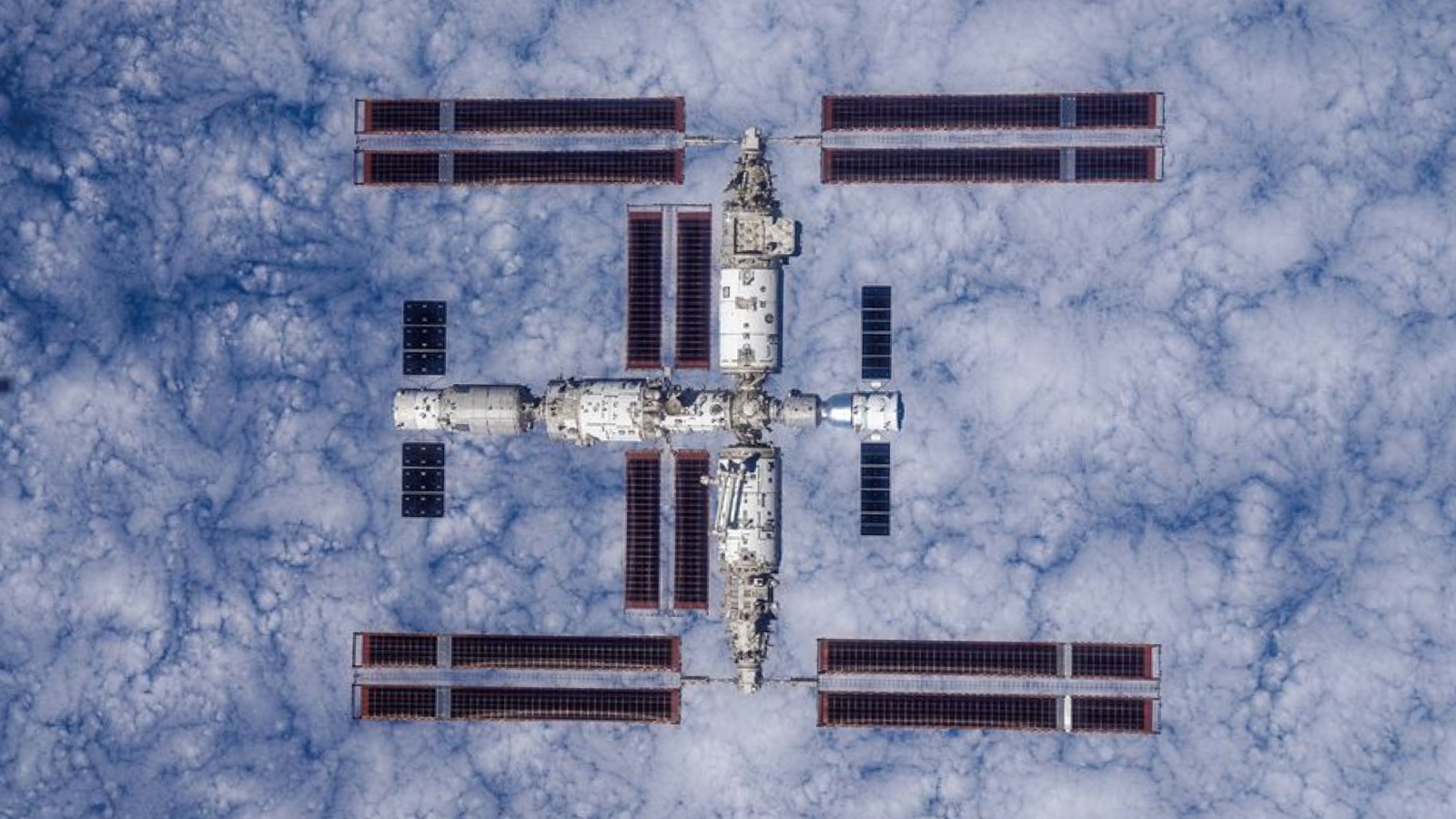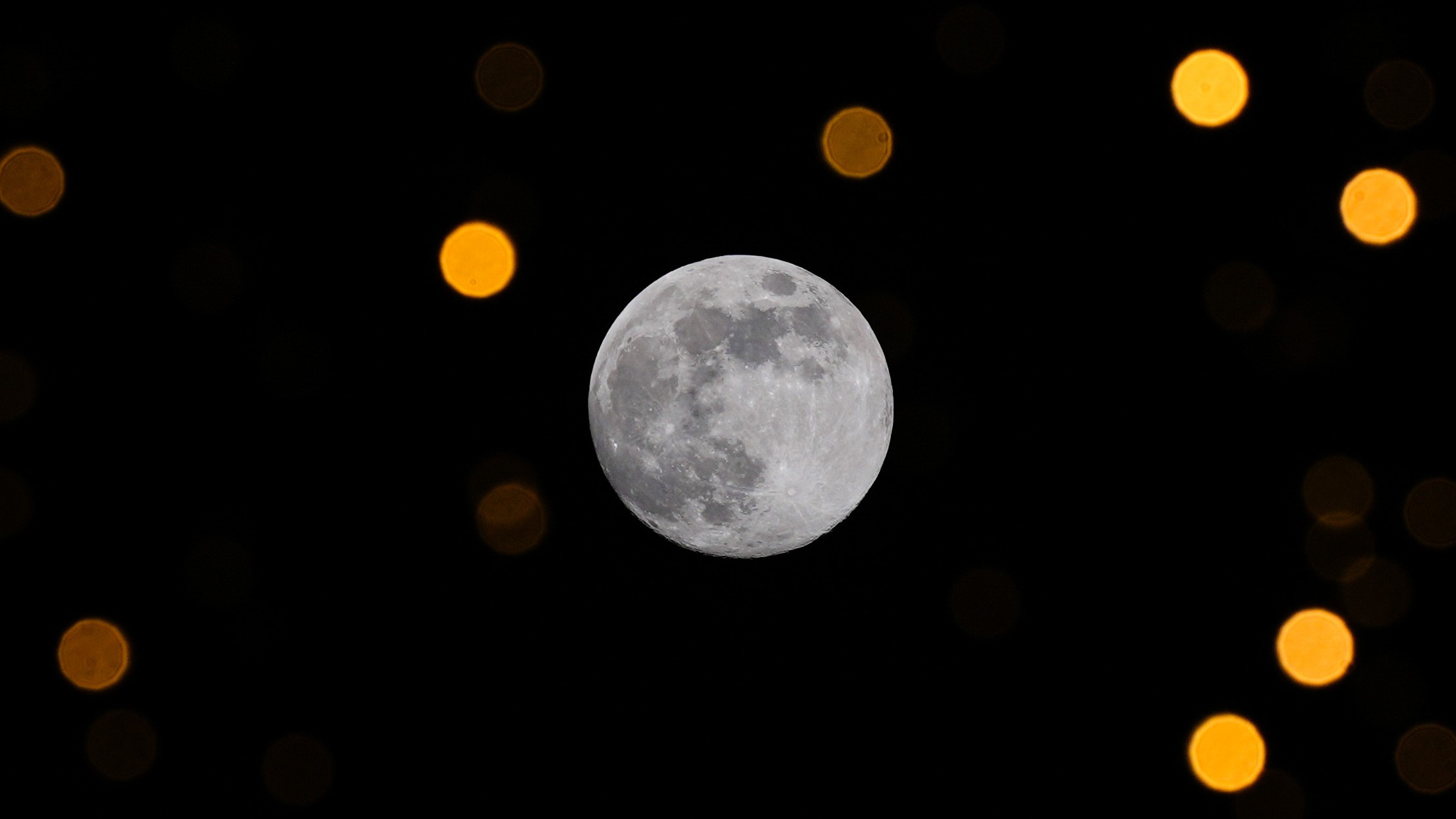Space photo of the week: China's 'heavenly palace' space station looms in 1st complete image
Chinese astronauts recently captured the first clear shot of the completed Tiangong space station as they were leaving the orbiting habitat to return to Earth.

What it is: China's Tiangong space station.
When it was taken: Oct. 30, 2023.
Where it is: Low-Earth orbit, between 210 and 280 miles (340 and 450 kilometers) above Earth's surface.
Where it was taken: Shenzhou 16 return module.
Why it's so special:
This is the first clear photograph of China's completed Tiangong space station, which became fully operational last year. The satisfyingly symmetrical image was taken by Chinese astronauts, or taikonauts, as they left the station after a five-month stay on board the orbiting habitat.
Tiangong station, which means "heavenly palace" in Chinese, is made from three modules: Tianhe, which was launched in April 2021; Wentian, which was launched in July 2022; and Mengtian, which was launched in October 2022. The finished station is 180 feet (55 meters) long and weighs 77 tons (70 metric tons), which makes it around one-fifth the weight of the International Space Station, according to Live Science's sister site Space.com.
Get the world’s most fascinating discoveries delivered straight to your inbox.
Related: China's mysterious space plane released an unidentified 'object' in orbit, US intelligence reveals
The photo was taken by the Shenzhou 16 mission's crew — Jing Haipeng, Zhu Yangzhu and Gui Haichao — shortly after they left the station in their return module.
The crew later had an unsettling trip back to Earth as one of the pod's parachutes ripped open on descent, which caused the module to land with a thump in the Gobi Desert, Space.com reported. But the passengers were unharmed.
While they were in space, the Shenzhou 16 crew completed a number of interesting experiments, including growing lettuces and tomatoes, as well as lighting a match to create a risky fireball.

Harry is a U.K.-based senior staff writer at Live Science. He studied marine biology at the University of Exeter before training to become a journalist. He covers a wide range of topics including space exploration, planetary science, space weather, climate change, animal behavior and paleontology. His recent work on the solar maximum won "best space submission" at the 2024 Aerospace Media Awards and was shortlisted in the "top scoop" category at the NCTJ Awards for Excellence in 2023. He also writes Live Science's weekly Earth from space series.
